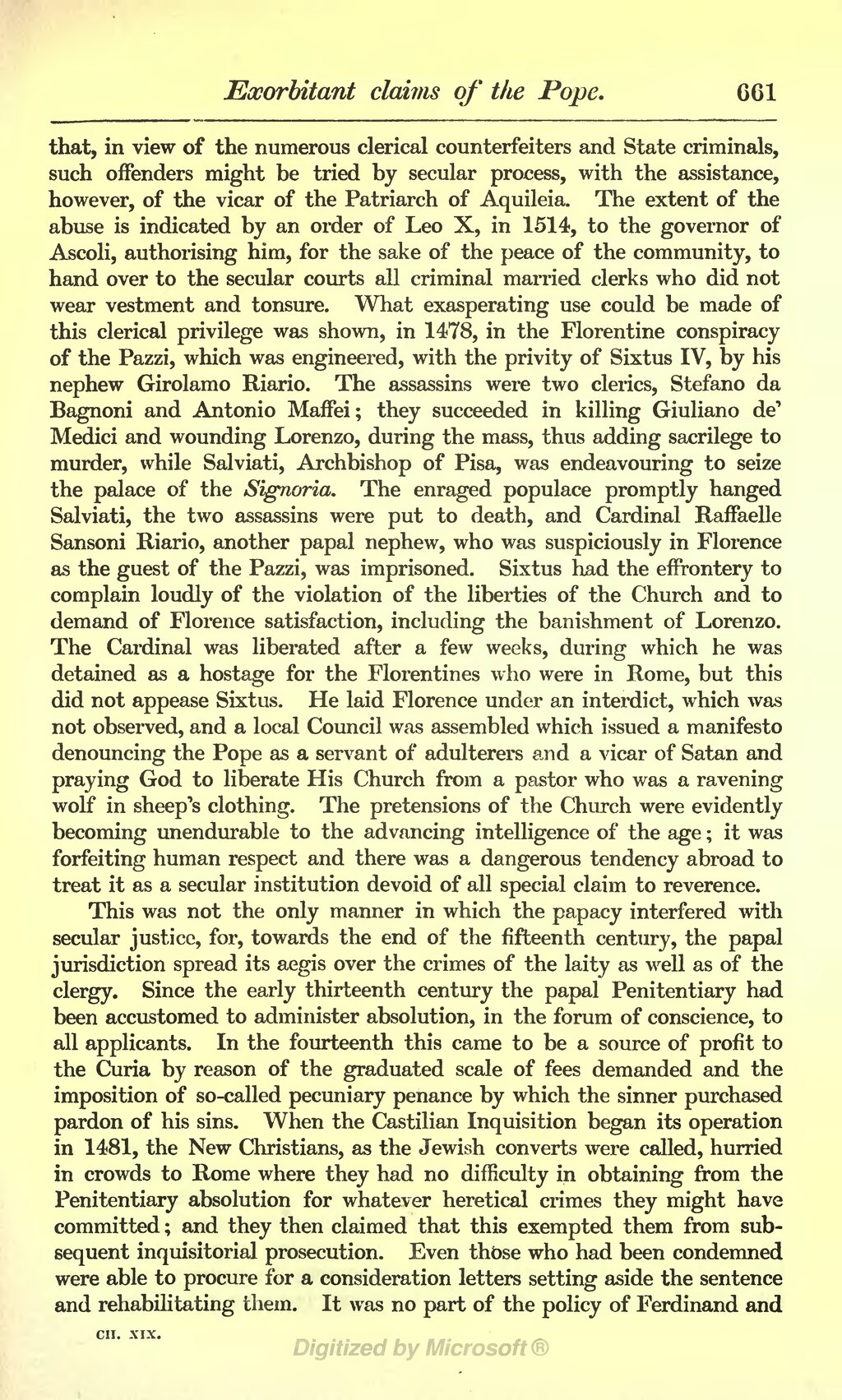that, in view of the numerous clerical counterfeiters and State criminals, such offenders might be tried by secular process, with the assistance, however, of the vicar of the Patriarch of Aquileia. The extent of the abuse is indicated by an order of Leo X, in 1514, to the governor of Ascoli, authorising him, for the sake of the peace of the community, to hand over to the secular courts all criminal married clerks who did not wear vestment and tonsure. What exasperating use could be made of this clerical privilege was shown, in 1478, in the Florentine conspiracy of the Pazzi, which was engineered, with the privity of Sixtus IV, by his nephew Girolamo Riario. The assassins were two clerics, Stefano da Bagnoni and Antonio Maffei; they succeeded in killing Giuliano de’ Medici and wounding Lorenzo, during the mass, thus adding sacrilege to murder, while Salviati, Archbishop of Pisa, was endeavouring to seize the palace of the Signoria. The enraged populace promptly hanged Salviati, the two assassins were put to death, and Cardinal Raffaelle Sansoni Riario, another papal nephew, who was suspiciously in Florence as the guest of the Pazzi, was imprisoned. Sixtus had the effrontery to complain loudly of the violation of the liberties of the Church and to demand of Florence satisfaction, including the banishment of Lorenzo. The Cardinal was liberated after a few weeks, during which he was detained as a hostage for the Florentines who were in Rome, but this did not appease Sixtus. He laid Florence under an interdict, which was not observed, and a local Council was assembled which issued a manifesto denouncing the Pope as a servant of adulterers and a vicar of Satan and praying God to liberate His Church from a pastor who was a ravening wolf in sheep’s clothing. The pretensions of the Church were evidently becoming unendurable to the advancing intelligence of the age; it was forfeiting human respect and there was a dangerous tendency abroad to treat it as a secular institution devoid of all special claim to reverence.
This was not the only manner in which the papacy interfered with secular justice, for, towards the end of the fifteenth century, the papal jurisdiction spread its aegis over the crimes of the laity as well as of the clergy. Since the early thirteenth century the papal Penitentiary had been accustomed to administer absolution, in the forum of conscience, to all applicants. In the fourteenth this came to be a source of profit to the Curia by reason of the graduated scale of fees demanded and the imposition of so-called pecuniary penance by which the sinner purchased pardon of his sins. When the Castilian Inquisition began its operation in 1481, the New Christians, as the Jewish converts were called, hurried in crowds to Rome where they had no difficulty in obtaining from the Penitentiary absolution for whatever heretical crimes they might have committed; and they then claimed that this exempted them from subsequent inquisitorial prosecution. Even those who had been condemned were able to procure for a consideration letters setting aside the sentence and rehabilitating them. It was no part of the policy of Ferdinand and
